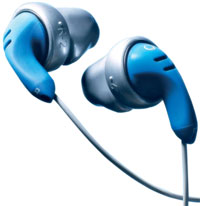 In-ear headphones (“earbuds”) like those sold with the iPod and other music players can increase the risk of hearing loss, according to a US audiologist (a what?!)
In-ear headphones (“earbuds”) like those sold with the iPod and other music players can increase the risk of hearing loss, according to a US audiologist (a what?!)
Research undertaken by Dean Garstecki of Northwestern University has found that that an increasing number of young people were now experiencing the kind of hearing loss found in aging adults.
According to Garstecki, cheap earbud headphones were more likely to increase the risk of hearing loss than old-school ‘over the ear’ headphones like the Grado SR60.
Garstecki’s studies found that MP3 users often crank the volume up to 110 to 120 decibels – enough to cause hearing loss after about an hour of listening.
The problem is worse for earbud wearers because the sound source is placed directly into the ear, boosting the sound signal by as much as six to nine decibels – the difference in intensity between the sound made by a vacuum cleaner and the sound of a motorcycle engine according to Garstecki.
 We can certainly verify that some folks seem oblivious to the risk, blasting their music so high that we can hear the annoying “tssk chk tssk chk” leaking from in-ear phones over the thunderous rattle of a tube train.
We can certainly verify that some folks seem oblivious to the risk, blasting their music so high that we can hear the annoying “tssk chk tssk chk” leaking from in-ear phones over the thunderous rattle of a tube train.
The risk is exasperated by the bigger storage capacities and increased battery life of today’s MP3 players, encouraging users to keep on listening for longer periods.
Like a next door neighbour banging on the wall, Garstecki advises MP3 listeners to “turn it down!”, adding, “if music listeners are willing to turn the volume down further still and use different headphones, they can increase the amount of time that they can safely listen.”
Noise-cancelling headphones are also seen as a better choice because they reduce background noise but their added bulk and increased expense is likely to limit adoption.
 Garstecki proposes the 60%/60 minute rule as a solution – this involves listening to an MP3 device for no longer than about an hour a day and at levels below 60% of maximum volume.
Garstecki proposes the 60%/60 minute rule as a solution – this involves listening to an MP3 device for no longer than about an hour a day and at levels below 60% of maximum volume.
“If music listeners are willing to turn the volume down further still and use different headphones, they can increase the amount of time that they can safely listen,” commented Garstecki.
While we share Garstecki’s health concerns, we’re not sure how effective a campaign along the lines of, “Turn it down! Play less music!” is likely to have with the wired generation walking about with thousands of songs in their pocket.
 The BBC is hoping to get Dr Who fans reaching for their red buttons en masse with a video-rich interactive TV application scheduled to run straight after the airing of the Christmas Day special (7:00PM GMT).
The BBC is hoping to get Dr Who fans reaching for their red buttons en masse with a video-rich interactive TV application scheduled to run straight after the airing of the Christmas Day special (7:00PM GMT). It looks that the BBC has invested muchos cash into the venture, employing live-action video and “state-of-the-art” special effects produced at the high end visual effects studio, The Mill.
It looks that the BBC has invested muchos cash into the venture, employing live-action video and “state-of-the-art” special effects produced at the high end visual effects studio, The Mill. Produced in Cardiff by BBC New Media and BBC Wales, producer Sophie Fante commented, “Attack of the Graske gives the viewer the unique opportunity to immerse themselves fully in the world of Doctor Who.”
Produced in Cardiff by BBC New Media and BBC Wales, producer Sophie Fante commented, “Attack of the Graske gives the viewer the unique opportunity to immerse themselves fully in the world of Doctor Who.” We can’t wait to watch this latest installment of the highly rated Dr Who series and are hoping to witness another kind of winter wonderland the day after when the mighty Cardiff City FC take on Plymouth.
We can’t wait to watch this latest installment of the highly rated Dr Who series and are hoping to witness another kind of winter wonderland the day after when the mighty Cardiff City FC take on Plymouth.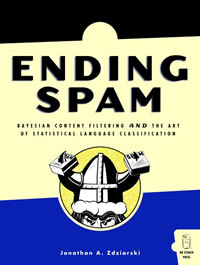 The full title of the book, “Ending Spam: Bayesian Content Filtering and the Art of Statistical Language Classification,” gives you a pretty strong indication that this book is going to provide a depth of information.
The full title of the book, “Ending Spam: Bayesian Content Filtering and the Art of Statistical Language Classification,” gives you a pretty strong indication that this book is going to provide a depth of information. The appendix (Shining Examples of Filtering) explains some of the programs out there, how they work and interviews with the authors.
The appendix (Shining Examples of Filtering) explains some of the programs out there, how they work and interviews with the authors.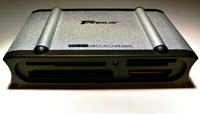 As your collection of digital devices grows, you’ll probably find it near-impossible to stick with just the one memory card format as the pesky things keep on changing.
As your collection of digital devices grows, you’ll probably find it near-impossible to stick with just the one memory card format as the pesky things keep on changing.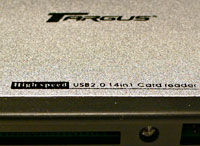 Getting data off these various cards usually means a trip to the back of the PC to install the various cables that came with all your camera/smartphone etc (when will they standardise all the ruddy USB connecters?!).
Getting data off these various cards usually means a trip to the back of the PC to install the various cables that came with all your camera/smartphone etc (when will they standardise all the ruddy USB connecters?!).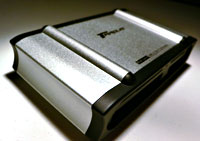 With most memory card readers offering support for a huge variety of memory cards, all you need to take on the road is a single USB lead to connect the card reader to your laptop and you’re sorted!
With most memory card readers offering support for a huge variety of memory cards, all you need to take on the road is a single USB lead to connect the card reader to your laptop and you’re sorted!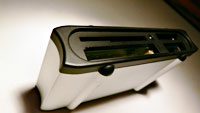 We were sadly guilty of leaving the charger for our Nikon N70 back in Blighty during out recent jaunt to NYC, and after seeing the battery levels accelerating downwards as we transferred zillions of images to our laptop, we shelled out for a cheap’n’cheerful Targus card reader, the TG-CRD14 ($25 street price).
We were sadly guilty of leaving the charger for our Nikon N70 back in Blighty during out recent jaunt to NYC, and after seeing the battery levels accelerating downwards as we transferred zillions of images to our laptop, we shelled out for a cheap’n’cheerful Targus card reader, the TG-CRD14 ($25 street price). Google have thrown the switch on the latest addition to their search results – music.
Google have thrown the switch on the latest addition to their search results – music.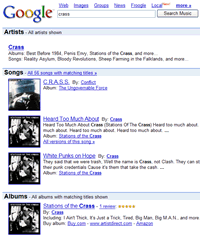 Initial music search results are split down to three sections Artists; Album; Songs. The information available is comprehensive.
Initial music search results are split down to three sections Artists; Album; Songs. The information available is comprehensive.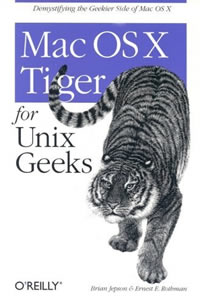 This book covers the Mac OS X 10.4 (aka Tiger) for geeks who have come from a Unix/Linux environment and are happiest using the command line, not sexy GUIs (graphical user environments).
This book covers the Mac OS X 10.4 (aka Tiger) for geeks who have come from a Unix/Linux environment and are happiest using the command line, not sexy GUIs (graphical user environments).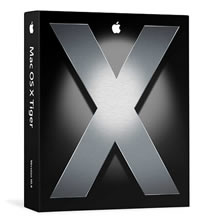 Bits like the section of PearPC might be a bit over the top for even a normal Unix user, but it does work. If you just want to develop Mac OS programs, this could be a way to do it – although it will be slowly as the emulator isn’t very fastest.
Bits like the section of PearPC might be a bit over the top for even a normal Unix user, but it does work. If you just want to develop Mac OS programs, this could be a way to do it – although it will be slowly as the emulator isn’t very fastest. It wasn’t that long ago that lugging around a projector was the first step on the painful route to a guaranteed hernia, but thanks to the wizardry of boffins and the onward march of technology, projectors are no longer the size of small houses.
It wasn’t that long ago that lugging around a projector was the first step on the painful route to a guaranteed hernia, but thanks to the wizardry of boffins and the onward march of technology, projectors are no longer the size of small houses.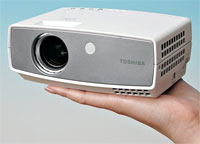 The TDP-FF1A (try saying that with a mouthful of tea) also comes with a handy USB port to let photographers directly display their photos straight off the camera.
The TDP-FF1A (try saying that with a mouthful of tea) also comes with a handy USB port to let photographers directly display their photos straight off the camera. Also shown off at the September IFA 2005 in Berlin was Samsung’s neat Pocket Imager SP-P300M projector.
Also shown off at the September IFA 2005 in Berlin was Samsung’s neat Pocket Imager SP-P300M projector.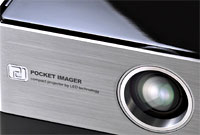 The attractive LED projector sports a contrast ratio is 1000:1 with an impressively high claimed bulb life of 10,000 hours.
The attractive LED projector sports a contrast ratio is 1000:1 with an impressively high claimed bulb life of 10,000 hours.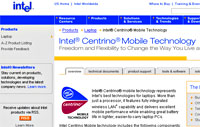 Intel has been bigging up its next-generation laptop technology, claiming they will use 25 percent less power while retaining class-leading performance.
Intel has been bigging up its next-generation laptop technology, claiming they will use 25 percent less power while retaining class-leading performance. According to Intel’s marketing chief for mobile platforms, Keith Kressin, this process means that the Napa system (which includes the Yonah processor, its attendant chipset and a new wireless chip) will soak up 28 percent less power than its predecessor while managing to perform 68 percent better
According to Intel’s marketing chief for mobile platforms, Keith Kressin, this process means that the Napa system (which includes the Yonah processor, its attendant chipset and a new wireless chip) will soak up 28 percent less power than its predecessor while managing to perform 68 percent better The tough challenge for Intel’s engineers is shoehorning ever more powerful processors into ever-slimmer laptops while improving battery life and managing to dissipate the processor’s heat.
The tough challenge for Intel’s engineers is shoehorning ever more powerful processors into ever-slimmer laptops while improving battery life and managing to dissipate the processor’s heat. The New Scientist is reporting that US researchers have discovered a brain mechanism that may link violent computer games with aggression.
The New Scientist is reporting that US researchers have discovered a brain mechanism that may link violent computer games with aggression. Bartholow argues that this reduction in response is correlated with aggressive behaviour.
Bartholow argues that this reduction in response is correlated with aggressive behaviour. The team shipped in a crew of 39 gamers, and quizzed them on the amount of violent games they played, before being shown a series of neutral images interspersed with occasional violent or negative (but non-violent) scenes, while sensors recorded their EEGs.
The team shipped in a crew of 39 gamers, and quizzed them on the amount of violent games they played, before being shown a series of neutral images interspersed with occasional violent or negative (but non-violent) scenes, while sensors recorded their EEGs. Throughout the tests, the violent games experience and P300 response were still strongly correlated with aggressiveness.
Throughout the tests, the violent games experience and P300 response were still strongly correlated with aggressiveness. Freeman also added that stopping people playing violent video games would be like banning them from playing sports such as football or hockey.
Freeman also added that stopping people playing violent video games would be like banning them from playing sports such as football or hockey. Sad to report that UK News organisation ITN has decided to end its ITV News Channel. Despite much favourable comment, they feel that there’s no room in ITV’s multi-channel world for a dedicated News Channel and the channel will close in January.
Sad to report that UK News organisation ITN has decided to end its ITV News Channel. Despite much favourable comment, they feel that there’s no room in ITV’s multi-channel world for a dedicated News Channel and the channel will close in January.